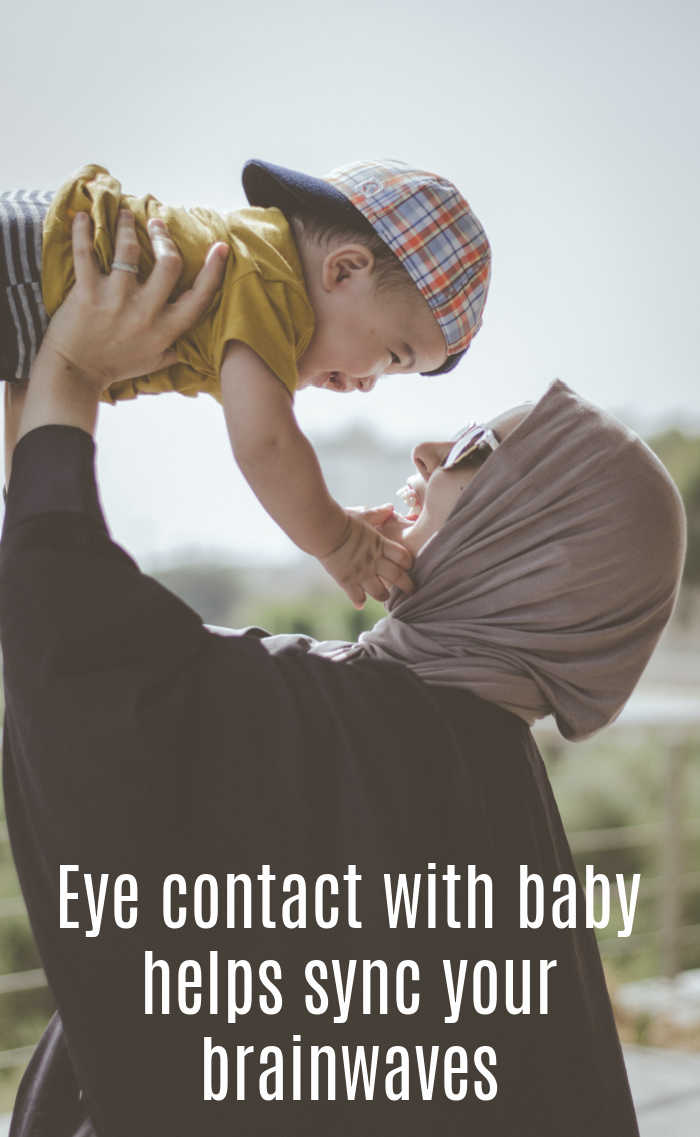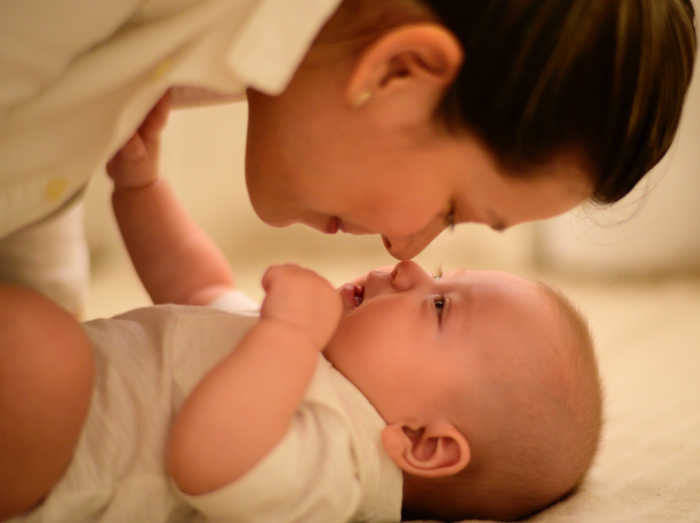Eye contact with your baby helps synchronize your brainwaves
Making eye contact with an infant makes adults’ and babies’ brainwaves ‘get in sync’ with each other – which is likely to support communication and learning – according to researchers at the University of Cambridge.
Be sure to check out even more of my helpful parenting tips, too!
Eye contact with your baby helps synchronize your brainwaves
When a parent and infant interact, various aspects of their behavior can synchronize, including their gaze, emotions and heart rate, but little is known about whether their brain activity also synchronizes – and what the consequences of this might be.
Brainwaves reflect the group-level activity of millions of neurons and are involved in information transfer between brain regions.
Previous studies have shown that when two adults are talking to each other, communication is more successful if their brainwaves are in synchrony.

Researchers at the Baby-LINC Lab at the University of Cambridge carried out a study to explore whether infants can synchronize their brainwaves to adults too – and whether eye contact might influence this.
Their results are published in the Proceedings of National Academy of Sciences (PNAS).
The team examined the brainwave patterns of 36 infants (17 in the first experiment and 19 in the second) using electroencephalography (EEG), which measures patterns of brain electrical activity via electrodes in a skull cap worn by the participants.
They compared the infants’ brain activity to that of the adult who was singing nursery rhymes to the infant.
In the first of two experiments, the infant watched a video of an adult as she sang nursery rhymes.
First, the adult – whose brainwave patterns had already been recorded – was looking directly at the infant.
Then, she turned her head to avert her gaze, while still singing nursery rhymes.
Finally, she turned her head away, but her eyes looked directly back at the infant.

As anticipated, the researchers found that infants’ brainwaves were more synchronized to the adults’ when the adult’s gaze met the infant’s, as compared to when her gaze was averted Interestingly, the greatest synchronizing effect occurred when the adults’ head was turned away but her eyes still looked directly at the infant.
The researchers say this may be because such a gaze appears highly deliberate, and so provides a stronger signal to the infant that the adult intends to communicate with her.
In the second experiment, a real adult replaced the video.
She only looked either directly at the infant or averted her gaze while singing nursery rhymes.
This time, however, her brainwaves could be monitored live to see whether her brainwave patterns were being influenced by the infant’s as well as the other way round.
This time, both infants and adults became more synchronized to each other’s brain activity when mutual eye contact was established.
This occurred even though the adult could see the infant at all times, and infants were equally interested in looking at the adult even when she looked away.
The researchers say that this shows that brainwave synchronization isn’t just due to seeing a face or finding something interesting, but about sharing an intention to communicate.

To measure infants’ intention to communicate, the researcher measured how many ‘vocalizations’ infants made to the experimenter.
As predicted, infants made a greater effort to communicate, making more ‘vocalizations’, when the adult made direct eye contact – and individual infants who made longer vocalizations also had higher brainwave synchrony with the adult.
Dr Victoria Leong, lead author on the study said: “When the adult and infant are looking at each other, they are signaling their availability and intention to communicate with each other.
“We found that both adult and infant brains respond to a gaze signal by becoming more in sync with their partner.
“This mechanism could prepare parents and babies to communicate, by synchronizing when to speak and when to listen, which would also make learning more effective.”
Dr Sam Wass, last author on the study, said: “We don’t know what it is, yet, that causes this synchronous brain activity.
“We’re certainly not claiming to have discovered telepathy! In this study, we were looking at whether infants can synchronize their brains to someone else, just as adults can.
And we were also trying to figure out what gives rise to the synchrony.
“Our findings suggested eye gaze and vocalizations may both, somehow, play a role.
“But the brain synchrony we were observing was at such high time-scales – of three to nine oscillations per second – that we still need to figure out how exactly eye gaze and vocalizations create it.”
This research was supported by an ESRC Transformative Research Grant to Dr Leong and Dr Wass.
Materials provided by University of Cambridge. Content may be edited for style and length.
